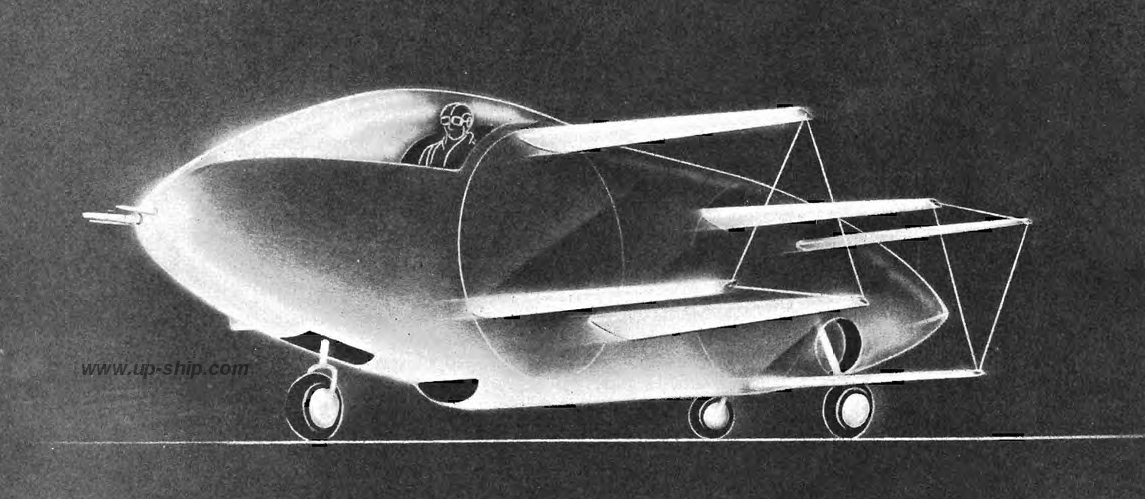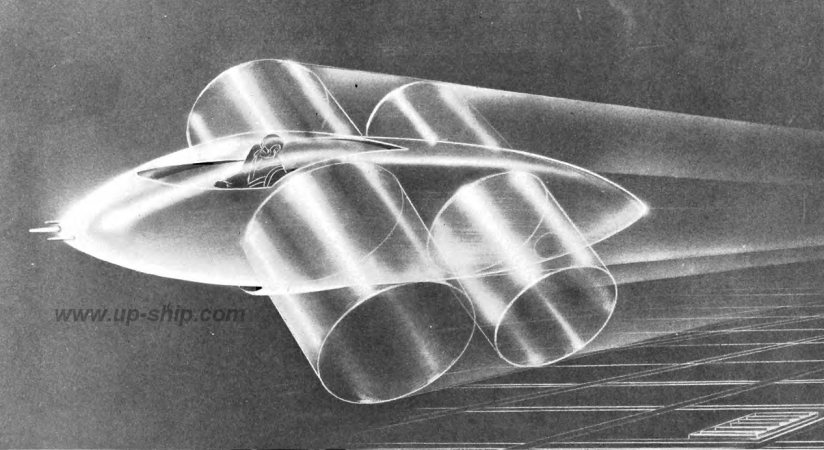One of the seemingly odder propulsion systems is the cyclogyro (see Wikipedia article). While an interesting concept, it’s mechanically complex, fragile and a power-hog. Still, people continue to design aircraft around the concept to this day. The general features of a cyclogyro vehicle are the ability to fly forwards, backwards or straight up with equal ease, and to do so fairly slowly.
One concept that differed from that was produced at the Air Material Command at Wright Field in Dayton Ohio, and reported on in May of 1946. This was for a high speed VTOL fighter using the same engine and armament as the XP-77. Performance was calculated as follows:
Max speed at sea level: 340 mph
Max speed at 27,000 feet: 428 mph
Max rate of climb, sea level: 2900 ft/min
Max rate of climb, 27,000 feet: 2000 ft/min
Gross weight: 3900 pounds
Interestingly, the two pieces of artwork that illustrate the concept seem to have been created by Alex Tremulis, an industrial designer who worked at the AMC at Wright Field during WWII. After WWII he went on to design the 1948 Tucker sedan automobile.
4 Responses to “The AMC Cyclogyro”
Sorry, the comment form is closed at this time.


I’ve seen this concept in artwork before, but didn’t have a clue about the principle it was supposed to work on. Maybe you could use it like a lawnmower to cut through foliage on final approach to landing. 😉
A method almost identical to this is used by modern tugboats to make them ultra-maneuverable. And probably much better used in this medium to chop seafood than ground equipment, people, birds, whatever…
It is a pity that whenever I see a design like this I am reminded of Tom Swift and his Ultrasonic Cycloplane. This makes it difficult for me to take such designs seriously.
Found a webpage on earlier designs using this concept:
http://www.dself.dsl.pipex.com/MUSEUM/TRANSPORT/cyclogyro/cyclogyro.htm